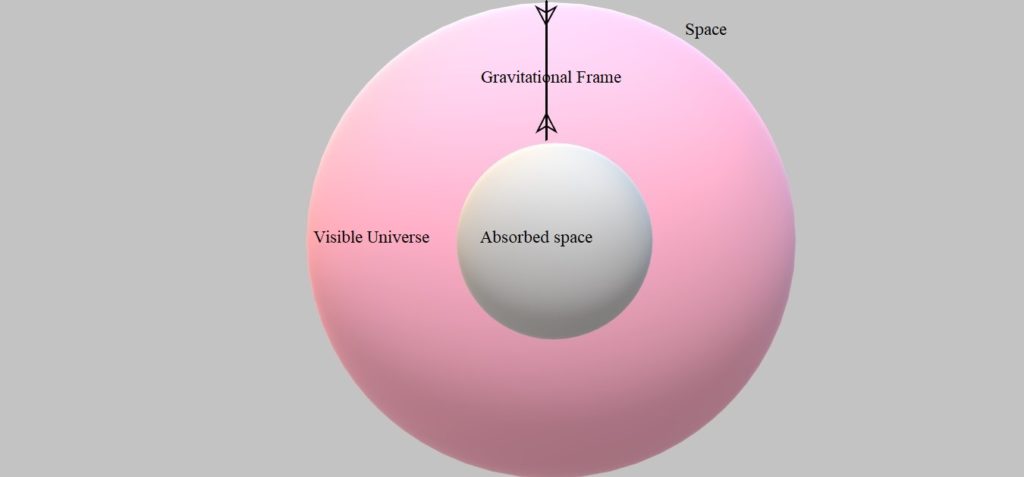End Of The Universe
We are discussing the future of the expansion of the universe. How will the universe end up with its expansion? Similar to the origin of the universe, there are so many stories and theories about its end too. In it, we will discuss the possibilities of some scientific theories. We can see three different situations here. We can see a different idea of a new space-time singularity forming at the center of the universe. You may wonder to hear about the new idea of space-time singularity. But it is possible. This idea is based on our published paper “Structure of relatively accelerating universe”. So we can have a quick check at all these possibilities.
Essentially, we have the idea of a big crunch, like the Big Bang. The idea of a permanent universe is also prevalent. At the same time, the idea of multiple universes is scientifically possible. My favorite is my own idea, which states the expansion of the universe is undergoing another big bang. That is a singularity is created at the center of the universe. Exactly opposite to the Big Bang singularity. Many say there was no center of the universe. But it is possible to gather the space-time somewhere in the universe like the formation of the big bang singularity. it is the same as the idea of a white hole. But its properties never match those of a white hole. Time moves in reverse here. Time is at its maximum when it approaches its center. So presently at the center, the time is the same as opposite to the age of the universe. Also, there is no energy left in it. Only space-time remains there. Only it is possible in a certain part of the universe. And that part is the center of the universe. That’s why the black holes from a gravitational collapse does not have any white holes or wormholes. Because neither space nor time can be created or destroyed. That I will explain in another chapter.
One of the most popular of these theories about the future of the universe is the Big Crunch. For many people, this is one of the most likely things to happen at the end of the expansion of the universe. As the galaxies move away from each other, the gravitational attraction between them disappears. This gravitational collapse will destroy the gravitational frame of the universe. Here a process similar to the Big Bang will take place. But we know that our universe is still accelerating its expansion. So there is no chance for a big crunch. Now we will check the other possibilities. So what is the current state of the universe? At the center of the universe is the absorbed space-time that is under extreme pressure and the energy within the gravitational frame that wraps it. If the Big Bang was caused by a singularity filled with energy, and its own space-time, the opposite is happening here. What happens here is an interaction between space-time and the energy that wrapped it. The current absorbed space at the center of the universe is in a state similar to that of the Big Bang Singularity. Therefore, it can be said that the universe is expanding towards another big bang
If energy was absorbed into the center of the universe when the Big Bang Singularity was formed, then space is absorbed into the center of the universe here. If the value of time was zero within the Big Bang Singularity, then time would be at its maximum here We can also call this singularity. That is, the universe is evolving from one singularity to another singularity. Here again, there will be a big bang and the current universe will turn into a singularity again. The Big Bang Singularity was under a lot of pressure and was in an extremely compressed state. Similarly, space-time singularity can be highly compressed under high pressure. The concept of compressed space-time singularity is probably hard for many of us to believe. But it is possible in a flexible space-time. As space within the space-time singularity shrinks, space-time within the gravitational frame begins to expand. The pressure within the singularity and the pressure within the visible universe within the gravitational frame create the conditions for another Big Bang. This possibility is discussed in the first two chapters of my book “Key to the Secrets of the Universe. The links to the book are in the description box. After the Big Bang, the absorbed space-time at the center of the universe becomes free. The gravitational frame of the visible universe will be shattered. Absorbed space, which was under a lot of pressure inside the gravity frame, could move out of the frame now. The force it creates will pull the energy forms that are part of the gravitational frame back to the center of the universe. Stars and galaxies will be pulled back to the center of the universe. Space-time will be completely removed from the center of the universe. This process will start as soon as the gravity frame breaks. The Planck era, the Inflation era, and all the other processes we saw at the time of the Big Bang will be repeated here in another form. This process, which lasts for billions of years, will create a new singularity at the center of the universe. Another big bang, a new universe. Things keep repeating themselves cyclically like this. In any case, our universe does not seem to be facing a gravitational collapse in the near future. The universe will continue its expansion for billions of years more. One thing is for sure, our universe has a permanent center.

Now we can check the possibility of multiple universes. The concept itself should be considered in two ways. It has been argued that multiple universes already exist. By this theory, just as the Big Bang happened and our universe came into being, there are possibilities to create other universes where the Big Bang happened in one or more places. We can never rule out the possibility of this. We have not yet been able to fully understand what the universe is. We do not know how much energy there was in the universe before the Big Bang. Also, we do not know how big the universe was. In any case, certainly, all the energy in the universe did not participate in the Big Bang. Then if there are other universes besides ours, they cannot collide with our universe in the future. This is because the universe is expanding to its own space-time. In any case, we have no evidence of other universes. So it remains a possibility. In any case, we can never control the universe.
Another possibility for multiple universes is in the final stages of cosmic expansion. After the gravitational collapse at the end of the growth of the universe, if a Big Crunch did not occur, our universe would split into multiple universes. When gravity collapses in the universe, the galaxies will naturally lose their attraction to each other. When the gravitational frame of the universe disappears, so does the state of the single universe. This results in each galaxy becoming an independent universe. Let us call this the Isolated Universe. If the force created by the Big Bang remained, the galaxies would be moving away from each other. Otherwise, they will evolve into universes that are constantly in place in space. Now let us examine the possibilities of the expanding universe becoming a stable universe with the help of an image.
This image illustrates the possibility of the formation of a stable universe without gravitational collapse. Two pictures are here. We have already discussed the first picture. This refers to the absorption of space-time within the gravitational frame. Here we see that space-time is more confined to the center of the universe. Space-time at the center of the universe is subject to more pressure. Here is something we need to understand. Space-time is just as important as energy. Space-time also has as many characteristics and properties as energy. Unfortunately, more of what we are trying to understand is just about energy. For me, space-time is also some kind of energy. It may be said to be the counterpart of energy. That’s why we say the total energy of the universe is zero. Because space-time and energy cancel each other. We need to learn more about space-time. Perhaps the dark energy that we are looking for is the absorbed space-time, into the universe. In any case, the role of space-time in the expansion of the universe is not small. As the expanding universe moves away from its center, the gravitational strength over there will decrease. This will help the space-time at the center of the universe to survive the pressure. This allows the space-time to expand further into the center of the universe. The second picture illustrates this. This is a situation that is likely to occur if the rate of cosmic expansion slows in the distant future. At this point, the universe, which is trying to keep the gravitational frame intact, pushes the absorbed space-time further into the center.
The gravitational frame of the total energy of the universe creates situations to reduce its thickness, due to the push of the absorbed space-time from the center of the universe. As it expands slowly at this stage, this process helps to keep the universe within the gravitational frame. When the expansion of the universe finally ends, it will be safe within a permanent gravitational frame. As the universe ceases to expand, so does the absorption of space-time within it also going to end. Then a permanent universe will form, which cannot undergo any changes again. This is a possibility that could eventually occur in the evolution of the universe. We have discussed that much about the evolution of the universe, so I would like to move on to the next topic.

